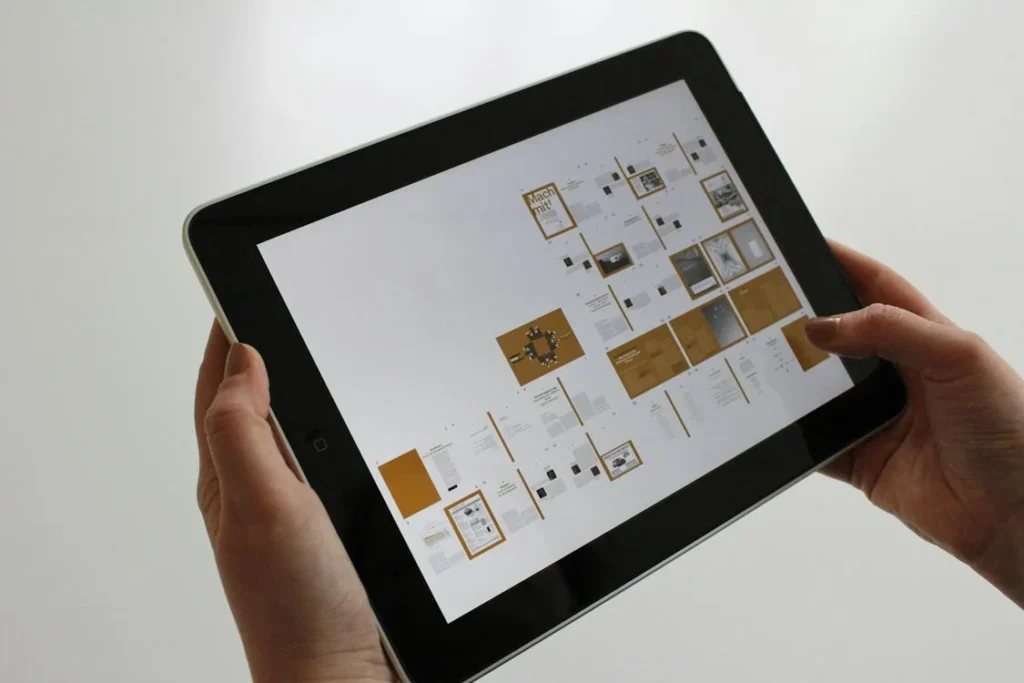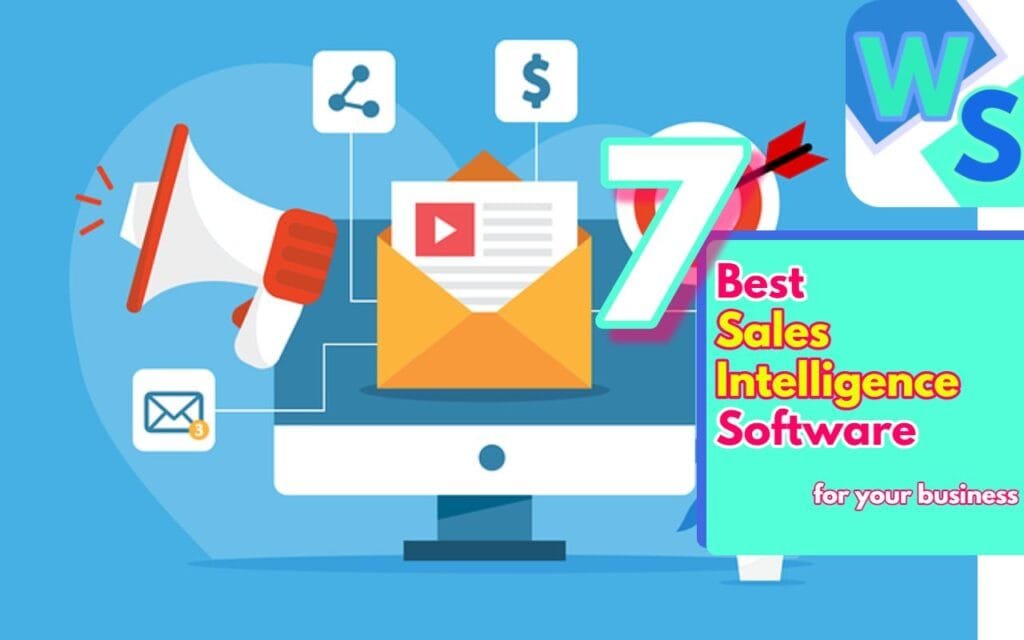Building Customer Loyalty
Establishing a strong foundation for customer loyalty is crucial for any business looking to thrive in today’s competitive market. To cultivate this loyalty, consider the following strategies that focus on quality, service, engagement, and feedback.
Quality Product Offerings
Providing a quality product is the first step to earning long-term business. Once customers have confidence in your offerings, they become dependent on your brand for their purchases. This dependency sets the stage for repeat customers and positive word-of-mouth marketing. Ensure that your products consistently meet or exceed customer expectations to reinforce their loyalty. For more insights on how product quality affects loyalty, explore our article on brand loyalty statistics.
Attention to Detail
Small details can significantly enhance the customer experience. Factors such as additional seating, cleanliness in your establishment, and complimentary snacks can make visits more satisfying. These seemingly minor considerations demonstrate your commitment to customer comfort and satisfaction. Customers who notice attention to detail are more likely to return and recommend your brand to others. Understanding the impact of these elements is essential when building brand loyalty.
Personalized Customer Service
Personalized service is vital in creating a connection with customers. Whether interactions are in-person or online, showing customers they are valued as individuals fosters loyalty. This can involve remembering repeat customers, addressing them by name, or providing tailored recommendations based on past purchases. Implementing these practices can distinguish your brand from competitors. For methods to enhance your service strategy, consider reviewing customer loyalty management.
Community Engagement
Building a sense of community around your brand enhances customer loyalty. Utilizing social media to engage with customers, share behind-the-scenes content, and encourage user-generated content fosters a feeling of belonging. When customers feel part of a brand community, they are more likely to develop emotional ties that promote loyalty. Consider engaging with your audience to learn about their needs and preferences, as discussed in our article on brand loyalty trends.
Feedback and Improvement
Listening to customer feedback is foundational to developing better relationships and increasing loyalty. Confirming that you value customer opinions by responding promptly and professionally can enhance their experience. Also, take actionable steps based on feedback to show customers that you are committed to continuous improvement. This proactive approach not only demonstrates respect for their opinions but also reinforces their loyalty to your brand. For more strategies on utilizing feedback, check our insights on improving brand loyalty.
Implementing these loyalty-building strategies can significantly enhance customer retention and satisfaction. By focusing on quality products, attentive service, community engagement, and constructive feedback, you can cultivate deeper customer loyalty in your business.
Importance of Customer Loyalty
Building strong customer loyalty is essential for businesses aiming to thrive in competitive marketplaces. This section outlines how customer loyalty affects purchase behavior, the benefits gained from loyalty programs, and the role loyalty plays during economic downturns.
Customer Purchase Behavior
Your understanding of customer purchase behavior is crucial in shaping effective customer loyalty strategies. According to the 2022 State of Brand Loyalty report by Yotpo, 38.5 percent of customers typically need to make at least five purchases from a brand before they develop loyalty. This statistic highlights the importance of repeated interactions, enhancing the likelihood that new customers can become repeat buyers.
| Loyalty Development Stages | Percentage of Customers |
|---|---|
| Make one purchase | 100% |
| Make five purchases | 38.5% |
Understanding this behavior allows you to tailor your marketing and engagement efforts to convert one-time customers into loyal patrons.
Benefits of Loyalty Programs
Implementing a loyalty program can significantly enhance your relationship with customers. The same Yotpo report indicates that 65 percent of respondents who felt loyal to a brand also signed up for a loyalty program. Companies that measure their loyalty programs often find impressive returns; as reported by Antavo, about 80 percent of those companies see nearly a 5x ROI on their investment in these programs.
| Loyalty Program Performance | ROI |
|---|---|
| Companies measuring loyalty programs | 5x |
Investing in a well-structured loyalty program can boost customer retention and increase overall sales, making it an essential element of your marketing strategy. Explore our insights on brand loyalty programs for more information.
Role in Economic Downturn
Customer loyalty becomes especially important during economic downturns. Over 55 percent of businesses in a survey by Antavo reported considering customer loyalty as crucial for overcoming potential recessions. Retaining existing customers is generally more cost-effective than acquiring new ones, which significantly affects Customer Lifetime Value (CLV).
In challenging economic climates, loyal customers can provide a stable revenue stream. Institutions like Macy’s have demonstrated the effectiveness of loyalty programs; in 2021, 70% of its transactions were linked to its loyalty program, and the company added over 3.5 million new members to its Star Rewards program in just one quarter.
By fostering customer loyalty, you not only enhance immediate sales but also create a buffer against market fluctuations, underlining the critical nature of customer loyalty management. It’s a strategy that holds promise for sustained business success in both favorable and adverse economic conditions.
Strategies for Customer Loyalty
Implementing effective customer loyalty strategies is essential for establishing long-lasting connections with your clientele. Here are some key approaches to consider.
Problem-Solving Products
Offering products that address specific problems can significantly enhance customer loyalty. By actively listening to feedback and responding in a professional manner, you can build stronger relationships with your customers. This kind of engagement invites customers to share their concerns and satisfaction, which can lead to improvements and innovation in your offerings (Widewail). The table below illustrates the importance of various problem-solving attributes to loyalty:
| Problem-Solving Attribute | Importance Rating (1-10) |
|---|---|
| Quality Improvement | 9 |
| Speed of Resolution | 8 |
| Availability of Support | 7 |
| Innovation | 9 |
Personalized Service
Personalized customer service is vital. Make sure every interaction—whether online or in-person—conveys that your customers are valued as individuals. This allows customers to feel recognized and appreciated rather than just another transaction. Detailed customer profiles can help tailor interactions and foster loyalty (Widewail).
| Service Aspect | Personalization Level (1-10) |
|---|---|
| Customer Interaction | 9 |
| Follow-Up | 8 |
| Custom Recommendations | 9 |
| Satisfaction Surveys | 7 |
Building Brand Community
Creating a sense of community among your customers can significantly enhance their loyalty. Engage your audience through social media, share behind-the-scenes insights, and promote user-generated content. These actions not only encourage customer interactions but also make them feel like they are part of something larger (Widewail). The following table summarizes effective community-building tactics:
| Community-Building Tactic | Engagement Level (1-10) |
|---|---|
| Social Media Campaigns | 9 |
| Events and Workshops | 8 |
| Exclusive Content | 9 |
| Feedback Forums | 7 |
Implementing Loyalty Programs
Incorporating loyalty programs can significantly bolster your customer retention efforts. Effective loyalty strategies should solve multiple issues with a single approach, including personalized service and community-building efforts. For example, tiered loyalty programs—such as Astrid & Miyu’s “Astrid & You”—offer increasing rewards based on customer engagement and spending, particularly benefiting luxury brands (LoyaltyLion). The table below highlights various loyalty program types and their benefits:
| Loyalty Program Type | Key Benefit |
|---|---|
| Tiered Programs | Encourages customer spending |
| Point Systems | Rewards frequent purchases |
| Subscription Models | Ensures recurring revenue |
| Referral Programs | Expands customer base |
Integrating these customer loyalty strategies can create a robust framework for enhancing loyalty among your clientele. By focusing on problem-solving, personalizing interactions, fostering community, and implementing effective loyalty programs, you can significantly boost brand loyalty for your business. For further insights into this topic, you may explore our articles on brand loyalty and customer loyalty management.
Impact of Customer Feedback
Collecting and utilizing customer feedback is essential for enhancing your business’s loyalty strategies. By understanding its impact on customer satisfaction, product improvement, and customer retention, you can develop more effective approaches to build brand loyalty.
Customer Satisfaction
Customer feedback directly influences satisfaction levels. When customers see that their opinions and suggestions are valued, it enhances their overall experience with your brand. According to Rapidr, collecting feedback enables businesses to identify areas that require improvement, which can lead to increased customer satisfaction.
| Feedback Type | Effect on Customer Satisfaction |
|---|---|
| Positive Feedback | Reinforces successful elements of product/service |
| Negative Feedback | Highlights areas needing improvement |
Implementing changes based on feedback not only resolves issues but also portrays your brand as responsive and customer-focused. This can lead to heightened customer loyalty, as satisfied customers are more likely to return.
Product Improvement
Customer feedback serves as a valuable resource for product enhancement. By actively seeking insights, your business can pinpoint issues and rectify them quickly. Rapidr highlights that constructive criticism can be viewed as an opportunity to improve products and services.
| Improvement Areas | Customer Feedback Role |
|---|---|
| Product Features | Identifies gaps and suggests enhancements |
| User Experience | Pinpoints usability issues and user preferences |
This iterative process fosters continuous improvement, allowing you to adapt offerings to meet customer needs effectively. By making informed decisions rooted in customer insights, your products can evolve alongside customer expectations.
Customer Retention
Positive customer experiences stemming from feedback utilization contribute to improved customer retention rates. Gathering customer feedback not only resolves issues but also builds trust and reliability. According to research, satisfied customers are less likely to churn, thereby enhancing retention rates. Monitoring key metrics like Monthly Recurring Revenue (MRR) and revenue churn rate can provide insights into customer retention dynamics. These metrics help identify customers at risk, allowing you to implement retention strategies tailored to their needs (Appcues).
| Retention Metrics | Importance |
|---|---|
| Customer Lifetime Value (CLTV) | Indicates the average value of customers over time |
| Revenue Churn Rate | Measures how much of the recurring revenue is lost |
By tracking these metrics and addressing customer feedback effectively, your business can maintain a loyal customer base and increase overall profitability. Implementing a customer loyalty management strategy that prioritizes feedback will strengthen your brand’s loyalty framework. For insights into effective feedback practices, visit our article on customer loyalty management.
Successful Loyalty Programs
Creating effective customer loyalty strategies is essential for fostering long-term relationships with your customers. Successful loyalty programs can significantly enhance customer engagement and drive repeat purchases. Below, we will explore three successful types of loyalty programs: value-based programs, tiered loyalty systems, and subscription-based programs.
Value-Based Programs
Value-based loyalty programs reward customers not only for their purchases but also for their engagement with the brand. Successful examples include LEGO Insiders and MoxieLash Insider, which incentivize customers through community interaction, social media engagement, and app downloads (LoyaltyLion). This approach promotes brand loyalty by creating a community around your brand, encouraging customers to participate actively.
Key Features of Value-Based Programs:
- Rewards for social media interaction
- Incentives for community engagement
- Engagement metrics to track success
Tiered Loyalty Systems
Tiered loyalty systems categorize customers into different levels based on their spending or engagement. A prominent example is Sephora’s “Beauty Insider” program, which offers points for purchases that can be redeemed for trial-sized products and unique experiences. In 2024, Sephora launched a tiered program in the UK, enhancing the personalization of rewards (LoyaltyLion). This setup not only encourages initial purchases but also motivates customers to reach higher tiers for enhanced rewards.
Key Benefits of Tiered Systems:
- Increased motivation to ascend tiers for better rewards
- Enhanced customer experience with personalized offers
- Ability to segment customers for targeted marketing
| Tier Level | Spend Required | Rewards |
|---|---|---|
| Bronze | $0 – $199 | Basic discounts |
| Silver | $200 – $499 | Free samples, exclusive offers |
| Gold | $500+ | Premium experiences, special events |
Subscription-Based Programs
Subscription-based loyalty programs, like Amazon Prime, require customers to pay a fee for access to exclusive benefits. These programs cater to frequent purchasers and can lead to significant revenue growth due to their predictable cash flow. Subscription models can encompass perks such as free shipping, exclusive deals, and access to unique content.
Characteristics of Subscription-Based Programs:
- Fixed fee for membership
- Access to exclusive products and services
- Enhanced customer retention through consistently valuable offerings
| Program Name | Monthly Fee | Exclusive Benefits |
|---|---|---|
| Amazon Prime | $14.99 | Free shipping, streaming services |
| Netflix | $15.49 | Access to original content |
| Spotify | $9.99 | Ad-free listening, offline access |
By implementing successful loyalty programs, you can significantly improve customer retention and encourage repeat purchases, contributing positively to your bottom line. For more insights on building effective customer loyalty programs, explore our resources on brand loyalty programs and brand loyalty statistics.
Customer Service Excellence
Customer service plays a pivotal role in enhancing customer loyalty. It is essential to measure and track various metrics that reveal how effectively your service team operates. By understanding these metrics, you can develop strategies that reinforce your customer loyalty strategies.
Metrics for Measurement
Several key metrics provide insights into customer service performance and its correlation with customer loyalty:
- Customer Satisfaction Score (CSAT): This measures customer satisfaction with a specific interaction. A higher score indicates more satisfied customers.
- Customer Effort Score (CES): This measures how easy it was for customers to resolve their issues. A lower score signifies that customers find your service straightforward and efficient.
- Net Promoter Score (NPS): This assesses the likelihood of customers recommending your business to others, serving as a gauge of customer loyalty and their overall sentiment towards your brand.
| Metric | Description | Importance |
|---|---|---|
| CSAT | Measures satisfaction with service | Indicates customer happiness |
| CES | Measures ease of resolving issues | Indicates efficiency of support |
| NPS | Measures likelihood to recommend | Indicates loyalty levels |
For further information on customer loyalty metrics, visit our section on brand loyalty metrics.
First Contact Resolutions
The first contact resolution (FCR) rate is a critical metric in evaluating the effectiveness of your customer support. A high FCR indicates that customer issues are resolved during the first interaction, leading to higher levels of customer satisfaction. Customers often prioritize rapid solutions, making this metric vital for your service strategy. Understanding how to effectively address customer inquiries during their initial contact can greatly influence their perception of your brand.
To enhance your approach to first contact resolutions, consider implementing the following strategies:
- Training support staff on common issues
- Providing comprehensive knowledge bases for immediate reference
- Utilizing automated responses for frequently asked questions
For more insights on improving your customer service delivery, read about increasing brand loyalty.
Customer Churn Rate
Understanding your customer churn rate is crucial for maintaining a loyal customer base. This metric reflects the percentage of customers who stop using your service or product during a specified period. High churn rates can indicate underlying issues with customer satisfaction and service quality.
To calculate customer churn, use the following formula:
[
\text{Churn Rate} = \left( \frac{\text{Customers at Start} – \text{Customers at End}}{\text{Customers at Start}} \right) \times 100
]
Monitoring churn allows you to identify patterns and implement strategies aimed at retention. Focus on customer feedback, improving your product, and enhancing service quality to foster loyalty. For more information on retention strategies, explore our section on customer loyalty management.
By emphasizing customer service excellence and continuously monitoring these metrics, you can significantly enhance customer loyalty and drive your brand’s success.
Personalization in Loyalty
Personalization has emerged as a significant factor in fostering customer loyalty. It is no longer a mere trend, but a necessity for businesses looking to enhance their brand loyalty strategies.
McKinsey Report Findings
A recent report by McKinsey highlights the growing demand for personalization in consumer interactions with brands. Consumers now expect personalized experiences, especially in sectors like retail, finance, and energy. Companies that excel in personalization can expect to see substantial benefits, including double-digit revenue growth and improved customer retention rates. The report notes that businesses implementing effective personalization strategies can achieve a revenue increase of 10 to 15 percent, and a company-specific lift ranging from 5 to 25 percent, depending on sector and execution capabilities.
Driving Revenue Growth
Personalization not only drives customer satisfaction but also significantly impacts revenue growth. Businesses that effectively personalize their offerings can enhance customer lifetime value and reduce churn. Improved customer lifetime value is crucial as it leads to greater brand loyalty and increased trust in the brand. The benefits of personalization can transform insights into tangible results, fostering deeper relationships with customers and leading to sustained revenue growth (Wallet Factory).
| Benefit | Impact on Business |
|---|---|
| Improved Customer Lifetime Value | Increases profitability over time |
| Reduced Churn | Retains existing customers, decreasing the need for new customer acquisition |
| Enhanced Brand Affinity | Fosters emotional connections with customers |
| Increased Trust | Builds reliability, encouraging repeated transactions |
Enhancing Brand-Consumer Relations
The personalization of customer interactions leads to stronger brand-consumer relationships. Brands that take the time to understand customer preferences create a more engaging experience. This engagement can result in greater loyalty, as customers feel valued and recognized. The ability to personalize not only meets but anticipates customer needs, further solidifying the bond between the brand and the consumer.
Customer feedback plays a key role in this process. By leveraging insights gathered from consumer interactions, businesses can refine their personalization strategies, tailoring their offerings to better align with customer desires. As a result, not only will customer satisfaction improve, but businesses can make informed decisions that lead to comprehensive enhancements in service and overall customer experience (Rapidr).
Building personalized relationships and promoting effective communication are central to building brand loyalty and maximizing your brand loyalty efforts. By implementing personalization in your consumer strategies, you stand to realize profound benefits that will enhance both customer loyalty and your bottom line.
Data-Driven Personalization
In today’s competitive market, implementing data-driven personalization is essential for enhancing customer loyalty. By leveraging customer data, brands can create tailored experiences that meet the specific needs and preferences of their target audience.
Persistent Identity
A successful personalization strategy starts with developing a “persistent identity” for customers. This involves aggregating various forms of customer information, such as email addresses and phone numbers, to gain a comprehensive understanding of consumer behaviors and preferences. By utilizing loyalty program data, companies can effectively tailor their offerings to individual customer needs (Forbes). This single source of truth enables brands to create a more cohesive and engaging customer experience.
Curated Engagement
Data-driven personalization extends to curating customer engagement strategies. By utilizing the insights gained from customer data, you can provide tailored communication that resonates with your audience. Implementing personalized reward redemption opportunities can significantly enhance customer engagement and loyalty. For instance, brands like Adidas, EasyJet, and Asics have successfully utilized personalized emails and rewards to create high levels of customer involvement in their loyalty programs (Forbes).
| Brand | Engagement Strategy | Result |
|---|---|---|
| Adidas | Personalized emails and rewards | Improved customer retention |
| EasyJet | Tailored communication | Enhanced brand loyalty |
| Asics | Customized rewards redemption | Increased customer interactions |
Personalized Offerings
Utilizing personalization capabilities based on comprehensive customer data fosters enduring customer relationships in a landscape where tailored approaches are expected. Research shows that 80% of consumers are more likely to make a purchase when offered personalized experiences (Forbes). Additionally, customers engaging with personalized offers are likely to spend more and demonstrate increased satisfaction. For instance, brands excelling in personalization efforts have experienced a 6.4% lift in member satisfaction. Moreover, scaling personalization has resulted in significant sales boosts; grocery retailers have seen increases of up to 2% due to tailored offerings (Forbes).
By integrating data-driven personalization into your customer loyalty strategies, you can enhance brand loyalty and build stronger customer relationships. Personalization not only improves engagement but also leads to greater customer satisfaction and increased sales. For further insights into building effective loyalty frameworks, explore our articles on brand loyalty programs and increasing brand loyalty.





















